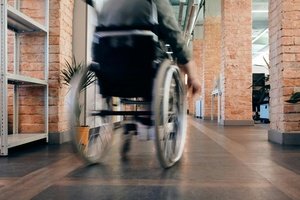Sustained regular exercise in young people improves self-esteem, reduces distress, increases fitness and physical health, and sets up long-term patterns that reduce disease risk in adulthood, but what is not so well known, is that there are some groups who disproportionately miss out on these benefits.
A new study from the University of Adelaide has found that females, people with low self-efficacy, reluctant exercisers, higher academic achievers, and those experiencing socioeconomic disadvantage are all at elevated risk of failing to establish regular exercise patterns during the transition from adolescence to young adulthood.
Associate Professor Scott Clark is head of the University of Adelaide’s Discipline of Psychiatry, and was part of the team that examined data collected as part of the Longitudinal Survey of Australian Youth (LSAY), which also showed young Australians on average exercise less regularly every year after transitioning from high school to university and work.
“I guess over a few years, we’ve made our way through the dataset, and been working on a number of different studies looking at trajectories in mental health, and looking at large databases,” Clark tells EducationHQ.
He says the research team has been particularly interested in the impact of exercise on mental health outcomes.
“It seems there might be a critical period, particularly coming through primary school, where exercise patterns are set.
“If you’re not involved in regular exercise as you come into your early teen years, there might be some risk that you might drop off, or never reach a level of exercise that is healthy – and in that way you place yourself at extra risk for negative long-term outcomes.”
Apart from regular social contact, depending on the exercise, Clark says the benefits are multiple, in terms of development.
“There is evidence in other biological studies that shows that exercise increases brain plasticity and brain health, and, I guess, reduces stress – and in that way feeds into better performance at school and better outcomes, which leads to, in longer term, in early adulthood, for you to have better health and better outcomes – both mental and physical.”
Prior research has shown similar findings regarding the benefits of forming exercise habits, but the LSAY data has provided a clearer understanding than has been previously possible.
“This is the largest study of its type and it’s good Australian data, so we know that it’s really relevant to the Australian context,” Clark says.
“We used a complex statistical modelling process called ‘group based trajectory modeling’, and what that does is looks at your chance of being in certain groups over time."
He said the researchers found that there were four groups; one group that either met guidelines of exercising every day, and one group that met exercising at least once a week, but they considered them both regular exercising groups in different models.
“And then we found groups that either tapered their exercise from age 15, or groups that increase their exercise from age 15, and a group that never really started any exercise.
“And what we found across those groups is that risk factors like being female, too much screen time, being more highly involved or more successful in their academic studies, people with families from low socio-economic backgrounds – they all have a higher risk of being associated with one of those groups.”
Given the rise in profile of women’s sport, the increased TV exposure and emergence of role models across a broad range of previously almost invisible team pursuits – cricket, football (soccer), AFLW, to name a few – it was something of a surprise that females were among these at-risk groups.
The researchers say multiple factors contribute to the gender disparity.

“The risk for academic high achievers was unexpected [in the research] and highlights the need to promote a balance between study and self-care to this group,” Associate Professor Scott Clark says. PHOTO: Yaroslav Shuraev
Dr Julie Morgan, Clinical Associate Lecturer at the University of Adelaide’s Discipline of Psychiatry, and lead author of the study, says disadvantage experienced by females is influenced by reduced opportunity, lower access, and lack of sports diversity, but also divergent parental and cultural expectations, stereotypes, and role models.
“Psychological factors, such as perceived sports competency and self-efficacy, may play an additional role,” Morgan says.
“Our study highlights that more needs to be done to promote long-term regular of exercise to female adolescents.”
Clark agrees and says a rise in the profile of women’s sport is an opportune one for schools.
“This data goes back into the 2000s, because it’s a longitudinal study, so what we might see in a subsequent sample of the LSAY is those changes [in females’ exercise habits] happening.
“Regardless, I think it’s an opportunity for schools to take advantage and embrace the role models in women’s sport to try and help young women to engage in it and support that through the schools.
“There’s a lot of positive role modelling that can be leveraged into programs and then used as part of education now that it’s there.
“It really wasn’t there even five years ago, so it’s a great thing.”
Along with females, a prominent at-risk group that came as something of a surprise to researchers was the highly intelligent, hard working students who aren’t paying enough attention to regular exercise.
“The risk for academic high achievers was unexpected and highlights the need to promote a balance between study and self-care to this group,” Clark says.
“I guess this group of people that are almost completely focused on their academic progress, if they don’t have a balanced lifestyle, [for teachers and schools] actually investing in trying to get some of those people interested in exercise, even if they lack the self efficacy to engage in exercise, is still important. And it should be an important part [of their overall education].”
“…identifying those at risk of high screen time, but also the ones that are academic achievers and trying to convince them that exercise is a good idea could have real benefits in the long run.”
Another researcher, Associate Professor Oliver Schubert, from the University of Adelaide’s Adelaide Medical School and the Northern Adelaide Local Health Network, agrees and says outreach is required at an early stage to encourage the at-risk groups to develop long-term exercise habits.
“Given the predictors of these patterns are identifiable at age 15, there is a key role for secondary school, especially in the last years, when academic achievements become more central for young people,” Schubert says.
“Equally, universities and vocational training institutions could run programs to support and encourage physical activity and sport.
“State governments and local councils also need to ask whether the current leisure infrastructure supports the needs of young people. Funding and support for grassroots community sport across gender and socioeconomic groups is critical.”
Teach developing youth about the value of exercise in the short-term, Clark says.
“And I guess also, coupling that with managing stresses.
“There’s a lot more weight on performance [these days], and particularly as you’re coming to big exams, but maintaining regular healthy exercise will help them have better outcomes in the long-term, along with having structured exercise programs within primary schools, making sure that that’s addressed in the curriculum and supported in terms of education, I would think.”














